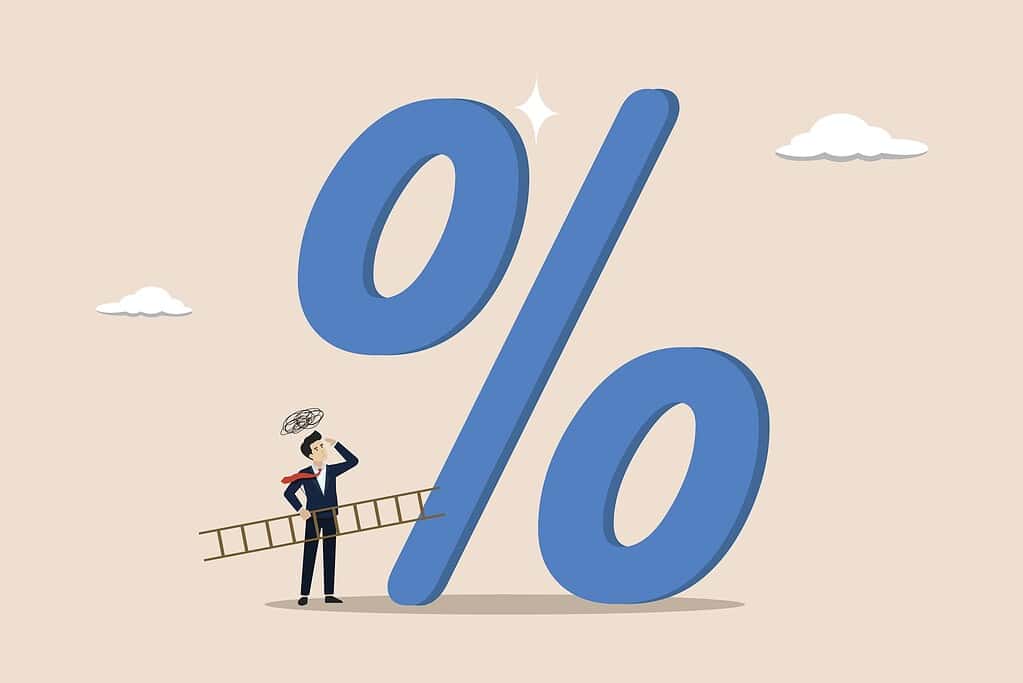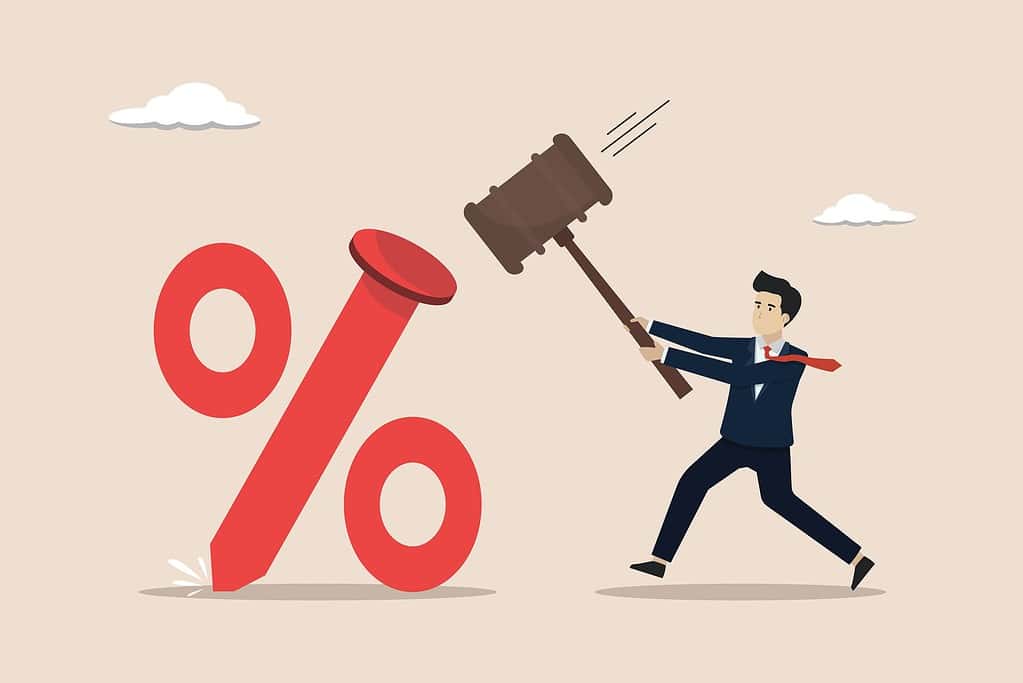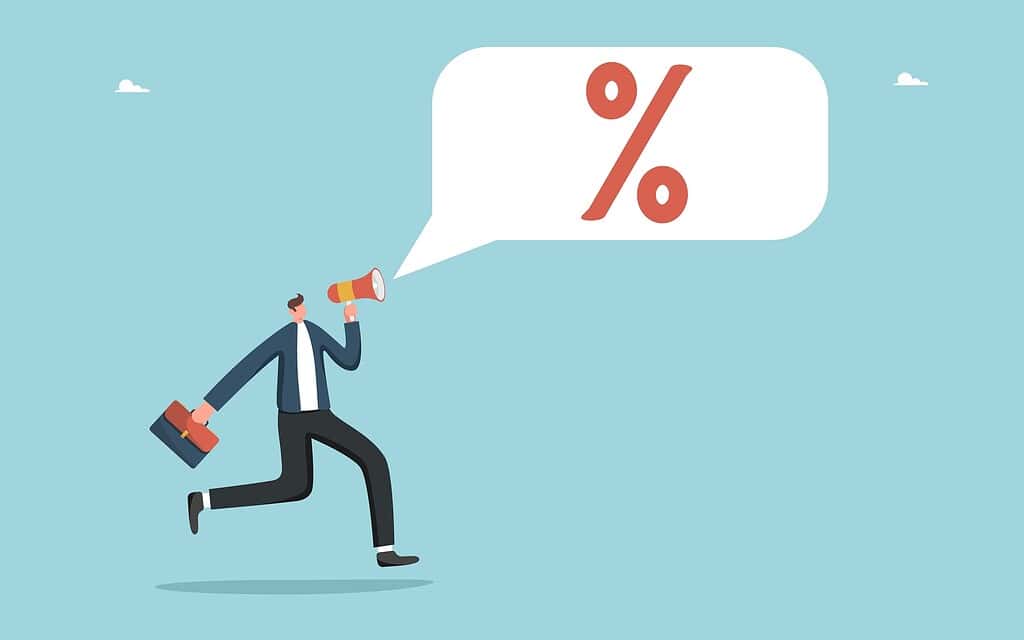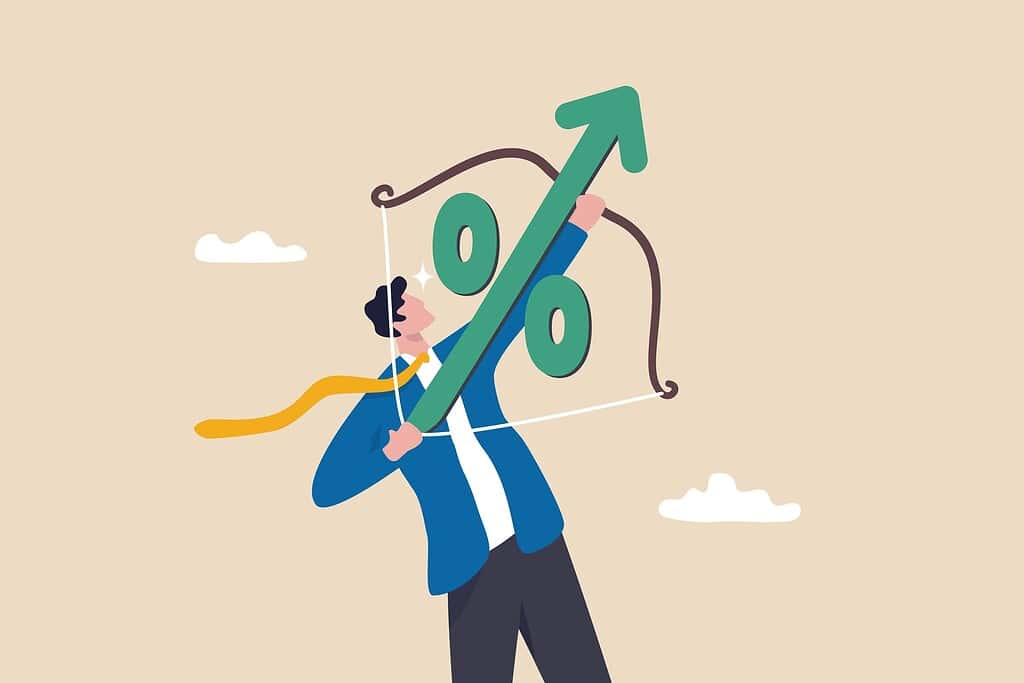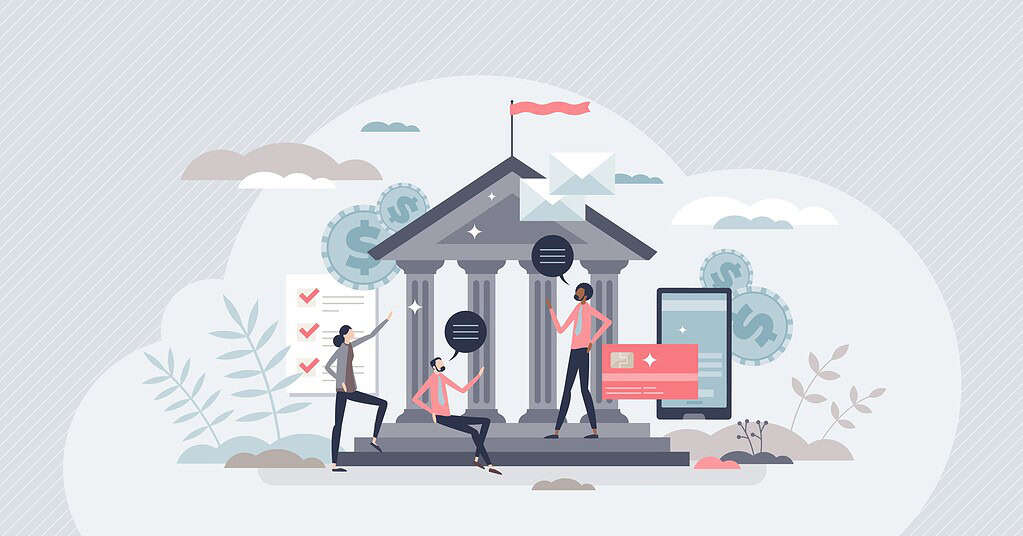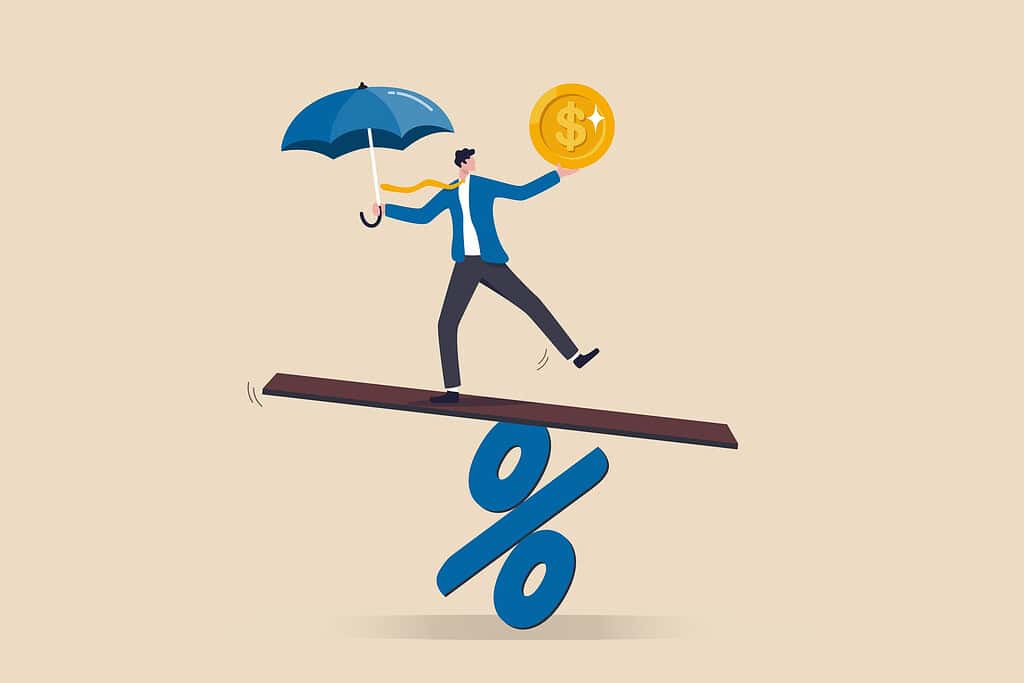Mexico And Canada Sign Bilateral Economic Agreement 6:16 AM (6 hours ago)
Canada and Mexico are close economic partners aside from their place in the North American free-trade bloc; bilateral trade between the countries in 2024 totaled about $56 billion and Canada’s total foreign direct investment in Mexico in 2024 was around $46 billion. Canada was Mexico’s fifth largest trade partner and Mexico was Canada’s third largest as of the end of last year. A key driver of the new accord is the status of the trilateral United States–Mexico–Canada Agreement (USMCA), which is up for renegotiation next year. US President Donald Trump is already questioning its key elements in light of his criticisms that Mexico and Canada are taking a soft approach to cross-border illegal activity in the region, from immigration to drug trafficking, and what he regards as their anti-competitive trade and investment measures. The new bilateral partnership agreement aims to secure the support of economic integration, while the USMCA’s future is less certain. Canadian Prime Minister Mark Carney and Mexican President Claudia Sheinbaum highlighted several new potential areas of collaboration. The Canadian leadership is interested in more diverse and resilient supply chains via Mexico, while the Mexican government wants to increase bilateral trade through direct access to Canadian ports, making the country less dependent on existing US maritime channels. Together, they are exploring joint production to target the growing Latin American and Asian markets, taking advantage of the Trans-Pacific Partnership. The new bilateral agreement also addresses key security components, such as enhancing security cooperation to combat synthetic opioid trafficking and social integration of migrant workers and related labor programs. Further meetings between Mexican and Canadian trade officials are expected in the coming months on a range of issues, from health to energy. Meanwhile, public consultation has begun on the USMCA, which is scheduled for review next year. Public consultation is an integral part of the renewal process, enabling parties to better prepare for the upcoming negotiations. It also give the leadership on each side a better understanding of political trends and their views of key economic issues.
The post Mexico And Canada Sign Bilateral Economic Agreement appeared first on Global Finance Magazine.
Campari Invites A Banker To The CFO Table 6:12 AM (6 hours ago)
Mele takes over the role from Paolo Marchesini, who will transition to vice chairman of the company. Marchesini, who joined Campari nearly three decades ago, has also been named to a three-year term on the board of directors. Mele, 56, is set to work closely with Simon Hunt, the newly minted CEO and an industry veteran who joined the Campari mix in January. Mele will oversee the finance, IT, and global business services functions while Hunt will directly manage the global supply chain. The new CFO, formerly CIO at Cassa Depositi e Prestiti (CDP), the Italian economic development bank, brings a wealth of industry expertise to Campari just as the sixthlargest player in the global spirits market reaches a critical juncture. US tariffs are squeezing margins, and China’s antidumping duties on European brandy imports threaten profitability. As if these pressures were not enough, global demand for alcoholic beverages is tepid. Marchesini’s tenure was marked by 40 business acquisitions. Mele, however, is expected to take a different tack. Hunt’s program emphasizes cost management, pricing rigor, and streamlining the brand portfolio. Home to 50 distinct brands, Campari is reorganized into four core divisions: House of Cognac, House of Aperitifs, House of Whiskeys, and House of Agave. The objective is to pare down nonessential labels and concentrate resources on the company’s flagship products—Aperol, Campari, Grand Marnier, Courvoisier, Wild Turkey, Appleton Estate, and Espolon Tequila—ensuring that they shine in 190 markets.
The post Campari Invites A Banker To The CFO Table appeared first on Global Finance Magazine.
Australia: BHP Tapping Its First Female CEO 6:07 AM (6 hours ago)
The implications extend well beyond that milestone. Leadership changes in the global mining industry, an industry defined by scale, risk management, and geopolitical exposure, are often judged through the lens of operational continuity. Slattery’s appointment provides that stability. She has led BHP’s largest business unit, delivered productivity gains, and managed sensitive stakeholder relationships in Australia’s resource sector. Her elevation signals a board-driven commitment to maintaining execution strength while modernizing leadership composition. From a governance perspective, however, BHP is setting a precedent. For executives in resource-intensive and capital-heavy industries, Slattery’s taking the reins signals a new strategic view of succession. Embedding diversity in succession planning is becoming increasingly recognized as more than just a reputational play; it can strengthen the social license to operate, improve regulatory and community relationships, and enhance investor perception at a time when ESG considerations are influencing capital flows. Moreover, diverse leadership pipelines reduce concentration risk by broadening the talent base from which future strategies will be formulated. Slattery will inherit complex challenges: demand volatility in commodities, scrutiny over decarbonization pathways, and rising geopolitical friction in critical mineral supply chains. Industry observers say that while her appointment as BHP’s first female CEO represents a milestone for gender diversity in mining, how she navigates a set of complex challenges will be closely watched as a test of whether inclusive leadership can deliver operational outperformance. BHP’s move will not, on its own, transform the mining industry. However, for CEOs and CFOs across various sectors, it underscores a competitive reality: leadership diversity is now inextricably linked to corporate strategy, investor confidence, and the ability to adapt in a rapidly shifting global economy.
The post Australia: BHP Tapping Its First Female CEO appeared first on Global Finance Magazine.
World’s Best Banks 2025 – Global Winners 5:38 AM (6 hours ago)
If one word described the global economy in 2024, it would be “resilient.” Growth was up slightly, with global GDP growth hovering around 3.1%, while the pace of global inflation slowed to approximately 5.8% from 6.8% the previous year, according to the International Monetary Fund. Although many thought a financial crisis was imminent, none materialized as businesses continued to focus on strengthening and diversifying their supply chains, implementing digitalization strategies, and responding to rising geopolitical tensions.
In this environment, French banking giant Societe Generale took numerous crowns, winning as Global Finance’s World’s Best Bank, World’s Best Frontier Market Bank, World’s Best Transaction Bank, and World’s Best Supply Chain Provider—Bank awards.
Throughout 2024, the financial group generated €4.2 billion in group net income (up 69% from the previous year) on €26.8 billion in revenue (up 6.7%) through its 26 million clients worldwide while streamlining its core businesses and divesting others.
The Return Of The M&A
The bright spot for 2024 was the return of M&A.
“On the surface, it may appear difficult to remain sanguine after anticipating a full market resurgence for several years,” wrote Jake Henry and Mieke Van Oostende, senior partners at McKinsey, in the firm’s 2025 annual M&A report. “But many of the dynamics that stymied dealmaking for the past three years, including some that limited 2024 global deal value and volume to roughly the average of the past 20 years, are receding.”
According to data from WTW’s Quarterly Deal Performance Monitor, 15 megadeals worth more than $10 billion each closed last year, a 36% increase from 2023, and there were 162 deals valued between $1 billion and $10 billion, for a 21% increase. The number of deals totaling between $100 million and $1 billion grew approximately 15% over the same period.
Although not the “full throttle comeback that many dealmakers hoped for in 2024, performance improved (in some regions, significantly),” the McKinsey report noted. “Global dealmaking was curbed by a variety of pressures and delivered moderate returns, with deal value up 12% to $3.4 trillion.”
The year’s M&A deals were not evenly distributed geographically, however, according to WTW. North America saw the most deals closed, with 361, up 14% from the previous year. Europe notched 155 deals, up 32% from 2023. In the Asia-Pacific region, companies concluded 163 deals, representing a 5% increase.
Overall, Global Finance’s Best Banks led the way in helping to grow the M&A pipeline.
Along with the World’s Best Bank award, global honors this year include recognition as Best Corporate Bank, Best Consumer Bank, Best Banks Worldwide in Emerging and Frontier Markets, and Best Sub-Custodian Bank. All are being announced here for the first time.
Previously announced honors include Best Global Transaction Bank, Best Bank for Sustainable Finance, Best Islamic Financial Institution, Best Investment Bank, Best Cash Management Bank, Best Trade and Finance Providers, Supply Chain Provider—Bank, Best Foreign Exchange Provider, Best Private Bank, and Best SME Bank.
Methodology
The editors of Global Finance, with input from industry analysts, corporate executives, and technology experts, selected the global winners of the World’s Best Banks 2025 using information provided by entrants as well as independent research based on objective and subjective factors.
Entries are not required, but experience has shown that the information supplied in an entry can increase the chances of success. In many cases, entrants present details that may not be readily available to the editors.
Judges considered performance from January 1 to December 31, 2024. Global Finance applies a proprietary algorithm to narrow the list of contenders and assign a numerical score, with 100 signifying perfection. The algorithm weights a range of criteria for relative importance, including knowledge of the sector, market conditions and customer needs, financial strength and safety, strategic relationships and governance, capital investment and innovation, scope of global coverage, size and experience of staff, risk management, range of products and services, and use of technology. The panel tends to favor private-sector banks over government-owned institutions.
The winners in each category are those banks and providers that best serve the specialized needs of corporations engaged in global business.
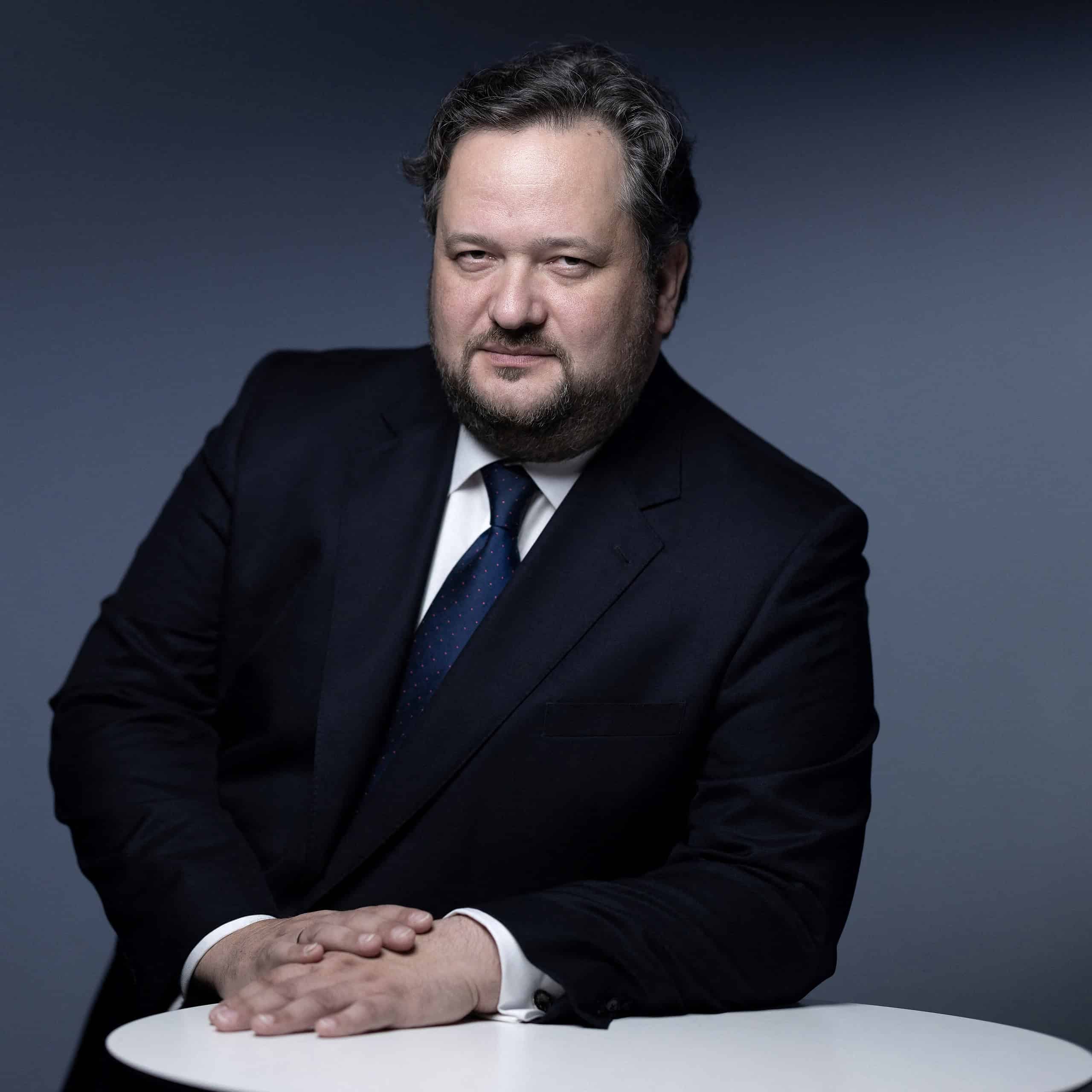
World’s Best Bank 2025
Societe Generale
In a year of economic uncertainty, persistent inflation and supply chain reorganization, Societe Generale stood head and shoulders above its global competition, earning the titles of World’s Best Bank and World’s Best Frontier Market Bank.
Its three core businesses—French Retail Banking; Global Banking and Investment Solutions; and Mobility, International Retail Banking, and Financial Solutions—generated €4.2 billion in group net income (up 69% from the previous year) on €26.8 billion in revenue (up 6.7%).
Throughout the year, Societe Generale combined strategic investments in cutting-edge technology, sustainability, and innovation with a drive to streamline core businesses while divesting non core areas.
The French banking giant has leveraged AI in approximately 420 use cases across its operations to enhance customer support via its Sobot chatbot and Elliot callbot, personalize advice for private banking clients using its Synoé platform, and numerous middle- and back-office operational, security, and risk management functions.
The bank surpassed its goal of contributing €300 billion to sustainable finance by 2025, a year ahead of schedule. It has since raised its target to €500 billion, comprising €400 billion in financing and advisory services and €100 billion in sustainable bonds, by 2030. Sustainable finance deals, including acting as the mandated lead arranger for a $1.2 billion green loan that enabled ReNew Power to develop a combined wind, solar, and battery storage infrastructure in its home market of India, have helped Societe Generale maintain a leading global role in this field.
Among the new offerings the bank debuted in 2024 were a joint venture with AllianceBernstein, dubbed Bernstein, which combines the two companies’ equity research, sales, and trading operations.
Societe Generale meanwhile strengthened its capital base by simplifying its business model, improving efficiency and increasing existing synergies through a series of strategic divestitures. It exited its private banking operations in the UK and Switzerland with the sales of SG Kleinwort Hambros and Societe Generale Private Banking Suisse and continued divestment of its African subsidiaries in Benin, the Democratic Republic of Congo, Madagascar, and Morocco.
Despite these changes, Societe Generale remains the leading player in frontier markets through its Global Transaction Banking network, which spans more than 50 countries and offers a range of integrated services including managing cross-border payments, liquidity, and trade finance. Leveraging its expertise in sustainability, the bank has partnered with the International Finance Corporation to accelerate financing of energy transition projects in developing markets through its Solar Pack initiative.
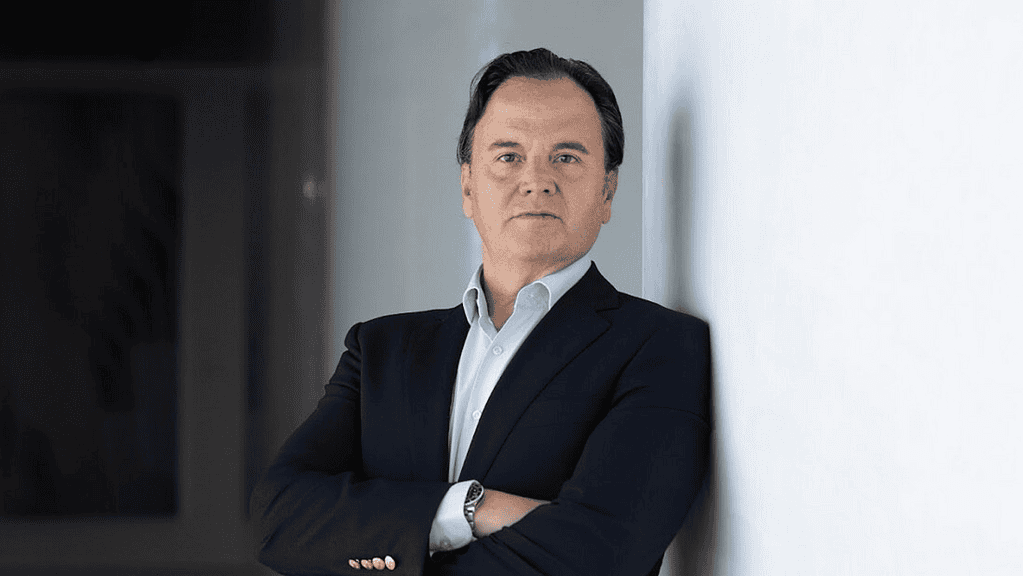
World’s Best Corporate Bank 2025
BBVA
BBVA claims the title of World’s Best Corporate Bank for the third consecutive year, having expanding its market share and deal leadership during 2024. It led 86 deals across telecommunications, energy, infrastructure, consumer goods, and services for a total volume of €5.16 billion. Among these was the €6.6 billion underwriting of MasOrange, formed by the merger of the telecom companies Orange and MasMovil.
BBVA also reinforced its commitment to sustainable finance, leading the €383 million project financing of Repsol Renovables’ Gallo portfolio, a 777-megawatt solar and battery storage facility spanning Texas and New Mexico as well as the refinancing of the Monegros wind project in Aragón. Additionally, the bank directed €51.1 billion into sustainable financing throughout the year.
All told, BBVA’s Corporate & Investment Banking division earned some €5.8 billion in revenue in 2024, up 27% from the previous year, while increasing its net attributable profits by 30%.
Helping to fuel its growth has been the bank’s strategic investment in its infrastructure and technology partnerships. BBVA’s internal AI Factory has applied AI and machine learning to enhance customer experiences and streamline internal processes.
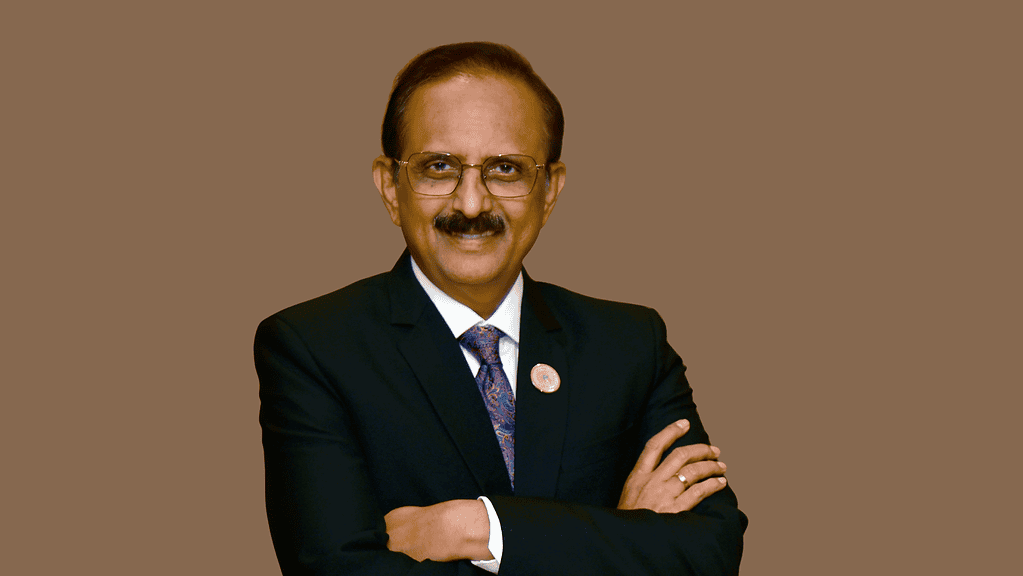
World’s Best Consumer Bank 2025
State Bank of India
Continued investment in digitalization, a growing global footprint, and innovative offerings earned the State Bank of India (SBI) its first World’s Best Consumer Bank award. Building on a history that dates back to 1806, SBI continues to enhance a menu of digital offerings that serve 132 million internet banking and 287 million mobile banking clients.
SBI reimagined its You Only Need One (YONO) banking and lifestyle mobile app in 2024 with its midyear announcement of YONO 2.0. The latest version enables users to initiate transactions at an SBI branch and complete them on the app, and vice versa, and features a more modular architecture for faster processing and transaction speeds. Other innovations include the debut of a tap-and-pay function in its BHIM SBI personal banking app, which leverages India’s Unified Payment Interface, as well as an end-to-end digital loan application for the bank’s Surya Ghar Loan scheme for the installation of rooftop solar collectors.
Despite its stress on digitalization, SBI also invested in 600 new branches across India to improve accessibility for underserved rural and semi-urban areas: more than fourfold the number of branches it opened the previous fiscal year.
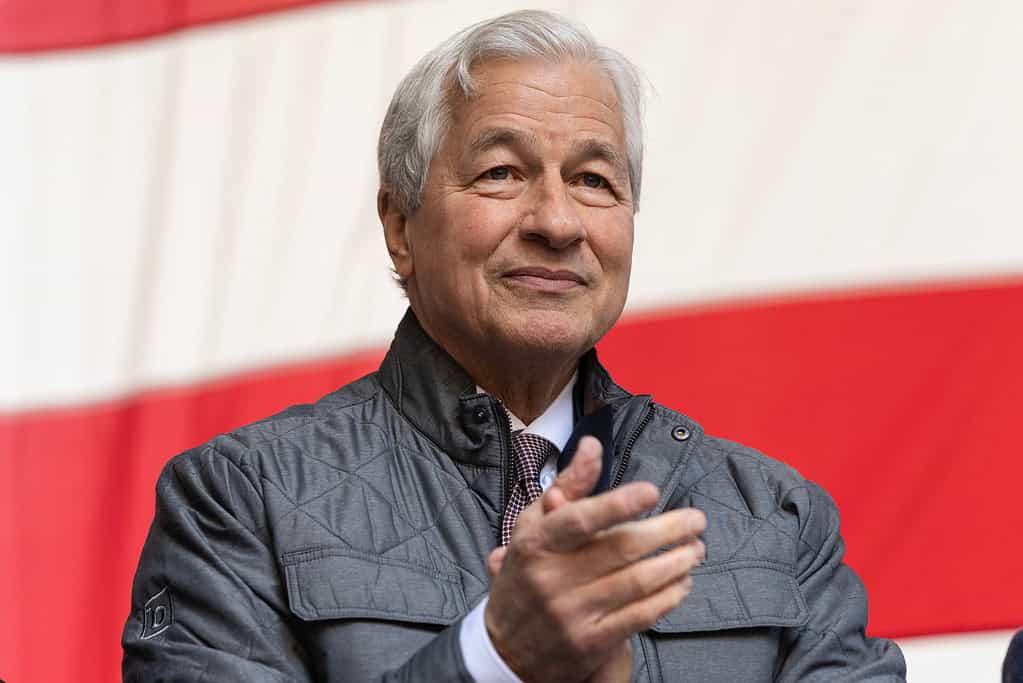
World’s Best Emerging Markets Bank 2025
JPMorgan Chase
One of the largest financial institutions globally, JPMorgan Chase (JPMC), wins the World’s Best Bank for Emerging Markets award for its broad set of offerings, continued focus on serving emerging markets, and overall expertise.
Although many of its competitors are pulling out of emerging markets, JPMC is expanding into them. It plans to enter new African markets or deepen its existing presence there “every couple of years or so,” Chairman and CEO Jamie Dimon told Reuters last October. The bank set up a representative office in Kenya that month and new offices in Côte d’Ivoire later in the year.
JPMC had a strong 2024, raising more than $400 billion in emerging market debt, including on a rising number of debt-for-nature transactions that enable countries to repurchase existing debt on better terms and use the savings to benefit the environment. El Salvador utilized the structure to secure an approximately $1 billion loan from the bank, then used it to repurchase $1.03 billion in a tender offer. The savings were allocated to improve and protect the country’s Lempa River watershed.
Besides raising debt, JPMC’s advisory services were strengthened by the launch of a Center for Geopolitics, which provides expert analysis of geopolitical trends aimed at helping clients navigate the complexities of the global economy, manage risks, and identify new opportunities.
Emerging market clients also benefit from the bank’s global infrastructure and sizable investment in its technology platforms, JPMC says. Access to these cutting-edge systems gives clients a more efficient, secure, and convenient way to manage their finances and business operations.
World’s Best Frontier Markets Bank 2025
Societe Generale
Frontier markets are playing an increasingly important role in the global economy, as they offer significant growth, albeit with smaller capitalization and higher volatility. Banks serving frontier markets must provide a comprehensive blend of corporate and commercial banking services that go beyond lending and deposits to more complex offerings, such as trade finance, securities servicing and sustainable finance. French banking giant Societe Generale is a leader across the board, with its broad range of offerings, and has beaten out its competitors to win this year’s World’s Best Frontier Market Bank award.
The bank, with over 160 years of experience, boasts a global network spanning more than 50 countries and offers highly integrated solutions for trade finance, cross-border payments, and liquidity management.
Through increased investment in artificial intelligence and other technologies, the bank has automated numerous processes and digitized others. In securities servicing, the company has leveraged generative AI, smart workflows, and robust data management to provide an enhanced client experience for its corporate and institutional clients, resulting in a doubling of client recommendation rates and increased participation in satisfaction surveys.
Meanwhile, Societe Generale has made great leaps in sustainable finance. The bank has committed 300 billion euros to sustainable finance by 2024 and introduced a new target of 500 billion euros by 2030, with a focus on decarbonization in sectors with the highest carbon-intensive emissions. To further strengthen its position, the bank also launched its Sustainable Global Transaction Banking Framework, which enables businesses to assess and monitor the environmental and social impacts of their working capital, trade, and liquidity management activities.
Societe Generale also signed a collaboration framework agreement with the World Bank’s International Finance Corporation to accelerate sustainable finance through investments in clean energy, water, and other infrastructure projects, as well as in agribusiness and women entrepreneurs.
World’s Best Transaction Bank 2025
Societe Generale
Societe Generale excels at navigating the complexities of realtime payments, offering rigorous testing and dedicated IT support including client training. While clients expect similar functionalities for domestic and cross-border payments, Jean-François Mazure, head of Cash Clearing Services, notes that they struggle to differentiate. Converging both payment types, which hinges on interlinking financial market infrastructures, is critical, he argues.
Numerous market initiatives, including immediate cross-border payments (IXB) between the US and Europe, face significant hurdles, Mazure warns: “It is truly complex from a compliance and legal framework standpoint. So, for the moment, none of these initiatives has succeeded in scaling up.”
To interconnect real-time payment systems, he says, the most likely way forward is to adopt the “one leg out” (OLO) principle already in operation for transactions involving one bank inside the European Economic Area and one bank outside. But all parties will need to continue to align for interconnectivity to be achieved, he adds. OLO’s success hinges on compliance with ISO 20022 standards as well as resolving commercial and liability challenges across various schemes.
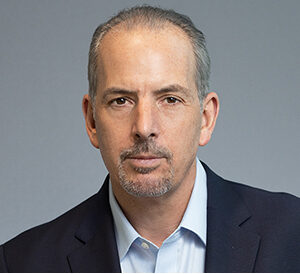
World’s Best Sub-custodian Bank 2025
CIBC Mellon
CIBC Mellon continues to refine its comprehensive asset-servicing business model, emphasizing innovation, process efficiency, and client service. Jointly owned by Bank of New York Mellon and Canadian Imperial Bank of Commerce, CIBC Mellon leverages CIBC’s local knowledge in the Canadian market combined with BNY’s technology and global custody infrastructure to serve institutional clients in Canada and globally. The combination has yielded consistent growth; assets under administration recently surpassed C$3 trillion ($2.2 trillion).
Ongoing priorities focus on broadening customer relationships and services through continual investment in IT and partnerships with the fintech sector, aimed at providing greater levels of core service automation along with enhanced transaction transparency and execution efficiency. This includes better straight-through processing for a seamless and secure transmission of client data, investment in pre- and post-trade communication services for trade matching and routing, and tracking of the settlement lifecycle.
Project Fuel, an enterprise-wide data and innovation initiative, is focused on transforming the client experience by equipping customers with tools to manage and analyze data more effectively, improving transparency and accelerating decision-making.
CIBC Mellon continues to enhance its online reporting platform, NEXEN, which integrates data and predictive analytics to provide clients with faster, real-time cash position and activity reporting through an improved user interface. Digital assets are expanding in the market; the bank is collaborating with stakeholders in Canada and globally and with BNY’s digital-asset unit to develop offerings in this area. This involves bolstering its data analytics capabilities and digital infrastructure through enhanced customization, automation, and service flexibility with a view to assisting clients to launch new offerings including alternative-asset ETFs and cryptocurrency funds.

World’s Best Bank for Sustainable Finance 2025
DBS
DBS aims to green Asia’s economy by acting as an environmental-transition catalyst for anchor companies, mid-caps, and SMEs. The bank provides transition-related financing for these organizations at the corporate, project, and asset levels. Among its offerings are green, sustainability-linked, and social loans and bonds, along with carbon-market financing and other products.
Standout transactions in 2024 included a loan to LG Energy to construct a plant in Poland that manufactures batteries used in electric vehicles. A HK$3 billion (about $385.7 million) loan to the Hong Kong Housing Society will help create affordable residential projects. A S$300 million (about $224.2 million) bond will help Singaporean developer CapitaLand develop projects in alignment with green finance frameworks.
In addition, the bank develops analytical tools to track and analyze climate data and engages with industries—notably in the power, automotive, steel, shipping, and real estate sectors—and policymakers to chart paths to a healthier environment.

World’s Best Islamic Financial Institution 2025
Kuwait Finance House
Kuwait Finance House (KFH) is recognized as the World’s Best Islamic Financial Institution for strengthening its franchise in multiple markets, for financing innovation, and for its overall operating performance. KFH provides services to customers in the Middle East, Europe, and Asia through extensive distribution channels, with an increasing emphasis on digitalization. The bank has subsidiaries in Kuwait, Turkey, Egypt, Bahrain, Iraq, Malaysia, the UK, and Germany.
KFH has made significant strides toward digital transformation in risk management, adopting the latest advancements in AI, machine learning, and advanced analytics to enhance risk measurement and monitoring. Tam Digital Bank, KFH’s digital bank in Kuwait, recorded strong customer numbers and transaction growth in 2024.
The bank’s financial profile is noticeably sound; a successful capital management program yielded a capital adequacy ratio (CAR) of 19.9%, considerably exceeding regulatory requirements and promising to support growth in the coming years. Return on average assets is good at 1.8% and loan asset-quality metrics are robust. KFH’s Islamic banking products and services cover commercial, retail, and corporate banking as well as real estate, trade finance, project finance, asset management, and investments.
World’s Best Investment Bank 2025
BofA Securities
Against the backdrop of thriving global stock markets and rising debt-finance activity, Bank of America (BofA) Securities’ global operations achieved an impressive 43% year-over-year jump in investment banking fees as of the fourth quarter of 2024.
The numbers were buoyed mainly by the bank’s three big areas of operations: North America, Latin America, and Europe, where the bank controlled a commanding 8.3%, 9%, and 4.4% of total investment banking fees, respectively. That boosted revenue for the full year to nearly $5.5 billion, according to Dealogic, representing around 6.2% of the global investment banking market.
BofA also scored big on M&A despite somewhat subdued activity in the field, serving as lead buy-side advisor on the $1.9 billion acquisition of Hawaiian Airlines by Alaska Air. The bank also acted as sole buy-side financial advisor on Keurig Dr Pepper’s $990 million acquisition of energy beverage company GHOST.

World’s Best Bank for Cash Management 2025
Bank of America
Reflecting the demand for consistent global visibility and control, Bank of America saw the app version of its CashPro platform surpass $1 trillion in payment approvals in 2024. CashPro allows clients to manage treasury operations across multiple channels: online, app, APIs, and file-based interfaces.
“One thing that distinguishes CashPro is its global consistency,” says Tom Durkin, head of CashPro at BofA’s Global Payments Solutions, “so that when a company’s finance team has team members in different countries, they’ll all have access to the same tools, views, and processes. The advantages are obvious: better visibility and control and no additional financial outlays.”
Much of CashPro’s success is due to BofA’s close engagement with clients, Durkin notes, particularly those who participate in client board meetings.
“This dialogue is so important,” he says. “We do deep dives into our clients’ priorities and challenges, we present options for new functionality and discuss whether those innovations are going to solve their real-world issues.”
The bank’s strategic vision for CashPro “will always be to provide a best-in-class platform that is personalized, predictive, and proactive,” he adds. “One recent demonstration is how we’ve embedded CashPro into our clients’ own systems through the CashPro Network, a collaboration with third-party providers allowing quick, easy connection to the bank with little to no investment.”
World’s Best Trade Finance Provider 2025
BNP Paribas
Offering global trade finance in 44 countries and more than 100 trade centers across more than 60 countries gives BNP Paribas a strong geographical foundation for its offering of seamless trade finance solutions across borders, supporting client growth throughout the entire trade cycle.
A broad range of traditional trade finance and working capital management solutions and substantial investment in technology, including web-based e-banking platforms like Connexis Guarantee, Connexis Trade, and Connexis Supply Chain, helps the French multinational support clients with complex international trade operations. Leveraging digital solutions, such as blockchain and AI, streamlines processes, improves efficiency, and enhances customer experience.
In 2022, BNP Paribas launched a program using AI to streamline the processing of trade finance documents and improve traceability for its clients. Since then, the bank has rolled the program out to 15 countries and processed 40,000 transactions.
“We have implemented AI technology to help classify, extract data, and automate controls. This is live today and being further expanded in terms of functionalities,” says Jean-François Denis, global head of Trade Solutions. “Bank guarantees also present the potential for AI usage, such as verifying guarantee clauses against acceptable clauses, policies, and guidelines. Anti-money laundering is yet another area where we have deployed AI.”
World’s Best Supply Chain Finance Provider – Bank 2025
Societe Generale
The French banking giant introduced a new workflow product in 2024 that includes external data and better analyzes clients’ working capital needs. The new offerings include peer comparison of key receivables and payables financing elements.
On the sustainability front, Societe Generale offers an ESG version of its full range of solutions, including green or social-focused factoring, forfaiting, and sustainability-linked supply chain financing (SCF). The bank also offers a dedicated and simplified solution for retail clients and SMEs based on their ESG rating.
Finally, establishing connectivity to CRX Markets, the marketplace for working capital finance, has improved support for SocGen’s largest clients, helping to grow the bank’s SCF programs.
World’s Best Global Foreign Exchange Bank 2025
UBS
Upon completing its megamerger with Credit Suisse in May 2024, UBS leveraged its already best-in-class corporate banking, foreign exchange (FX), and product offerings for a record-breaking year. Not only did its global operation more than double analysts’ expectations in the third quarter of 2024, booking a massive $1.4 billion in net income, but it did so with a significant contribution from its corporate banking division, which saw revenue jump by more than 8% year over year.
Those numbers received a massive boost from UBS’s thriving FX operation, which averaged over $125 billion in daily electronic FX trades, with more than 2,500 active global clients. The bank posted substantial growth across several geographies and currency pairs. Among the highlights: solid profitability growth in Middle Eastern and Northern African currencies and a massive 40% market-share increase in Scandinavian currencies. In Asia, UBS’s continued efforts to improve its already top-tier suite of electronic FX capabilities paid off handsomely in China and Singapore, where it has doubled down on its data center improvement efforts.
On the technology front, UBS further expanded the limits of the global FX market, hosting the world’s first intraday FX swap in a regulated venue in July. The bank recently launched its blockchain-based multicurrency payment solution, UBS Digital Cash, processed through its flagship FX Engine Room, enhancing its overall FX offering.
World’s Best Private Bank 2025
J.P. Morgan Private Bank
For the fifth consecutive year, J.P. Morgan US Private Bank has excelled at adapting to shifting macroeconomic conditions, delivering best-in-breed results to its clients. Riding the phenomenal rebound in global investing built on improving monetary conditions and subsiding inflationary pressures, the bank saw client assets rise by 24% over the previous year, totaling more than $2.5 trillion under supervision.
Against this backdrop, revenues increased 18.5%, with pretax income showing an even more significant 36% boost year on year.
On the product side, J.P. Morgan made significant strides at integrating advanced AI tools, including JPMorgan Chase’s Connect Coach and the Chase Connect mobile app, into its award-winning product portfolio. These include risk analytics and portfolio management services that serve as a benchmark for many in the industry. Alongside these product advances, the bank added over 300 expert advisors to its team, helping it attract more than 5,400 new clients.

World’s Best SME Bank 2025
BTG Pactual Empresas
BTG Pactual Empresas boasts an SME lending portfolio that reached R$22.1 billion (approximately $3.9 billion) in the first quarter of 2024, its SME credit book growing 52% year on year. SME business now accounts for 12% of BTG Pactual’s total portfolio.
The bank attributes its SME growth in part to its digital capabilities. Its digital platform offers an integrated portfolio of SME products and services, providing access to the bank’s credit, guarantee, insurance, investments, foreign exchange, and derivatives products. Associated services accessible via the platform include creation of invoices payable by QR code; online invoicing; instant electronic bank transfers; open banking; payments to suppliers, tax authorities, and utilities; budgeting and categorized spending services; and digital receipts. The platform offers more than 45 integrations, including Telegram and Google Workspace, along with a extensive range of productivity improvement products.
Speed is a crucial benefit. The platform enables BTG to disburse 95% of its loan funds in less than 10 minutes, the bank says, 16 times faster than its competitors.
Agriculture is a big part of the Brazilian economy, and BTG offers services tailored to the sector including credit lines for agricultural products (fertilizers, pesticides, seeds); equipment financing; and infrastructure financing for the construction of silos, warehouses, and other facilities.
Activities addressing ESG issues are also important to BTG. Of its loans to corporations and SMEs, 72% are subject to social, environmental, and climate-risk analysis, in line with international best practices. R$8.9 billion of its lending portfolio aligns with the bank’s sustainable financing framework.
The post World’s Best Banks 2025 – Global Winners appeared first on Global Finance Magazine.
CS Setty: Room For Growth 20 Oct 7:24 AM (2 days ago)
Global Finance: The State Bank of India (SBI), the country’s largest bank, posted solid returns in 2024. How did you achieve this, and is it repeatable? Challa Sreenivasulu Setty: Our strong fiscal-year 2025 performance stemmed from a disciplined growth strategy, prudent risk management, and leveraging our diversified portfolio. We saw healthy credit growth across the retail, SME, and corporate segments. Most importantly, we achieved these returns while improving asset quality, led by robust underwriting, rigorous credit monitoring, and recovery efforts. We balanced loan book expansion with strong low-cost deposits, ensuring stable margins. This was underpinned by cost efficiencies from digitalization. We are confident that these results are sustainable as they rest on the pillars of consistency, productivity, and resilience. As India’s economy continues to expand, we see opportunity for SBI to grow while maintaining our capital position, technology edge, and customer trust. GF: What are the latest consumer banking milestones SBI has reached on its digital transformation journey? Setty: SBI’s digital journey is spearheaded by our flagship You Only Need One [YONO] platform, which offers both mobile and branch banking. YONO has surpassed 90 million registered users, with over 65% of savings account openings and over 40% of personal loans sourced digitally. We also have 140 million registered users on our Retail Internet Banking platform, besides 7.2 million registrations on WhatsApp Banking, which is currently being offered in six languages. This scale demonstrates our success in driving digital inclusion; we are bringing millions of customers, from urban millennials to rural users, onto digital banking. Initiatives like YONO Business, YONO Global, video-KYC onboarding, and end-to-end loan processing are redefining convenience. The next phase is embedding generative AI for hyper-personalization and predictive engagement, making digital not just a channel but the core of our customer experience. All these efforts underscore SBI’s digital transformation journey. From an institution with over 200 years of legacy, we have reinvented ourselves as a future-ready, digital-first bank. GF: How is SBI improving customer experience in consumer banking? What role does AI play? Setty: Enhancing customer experience is central to everything we do at SBI, driven by an unwavering customer obsession that shapes our decisions and priorities. To improve service quality, we measure customer experience using various metrics and are simplifying processes to reduce turnaround times. Our omnichannel and multilingual approach ensures seamless transactions across platforms. By using analytics and AI, we are moving toward an anticipatory customer service approach rather than merely pushing generic offers as a reactive approach. Branches are being reimagined as advisory hubs while routine services are being migrated to digital channels. Our mission to be the Bank of Choice is built on trust and rests on delivering superior, personalized experiences at every touchpoint. GF: Where do you see growth in the coming year for consumer banking and the geographies SBI serves? Setty: Domestically, SBI already has unparalleled reach, but we see significant headroom to grow further in consumer banking across India’s length and breadth. The growth in consumer banking will primarily come from proactively fulfilling the evolving needs of people as the middle-income classes grow and scaling of firms creates new wealth and redistribution opportunities. SBI’s retail personal loan book grew in the range of 11% to 14% in the last few quarters owing to robust growth in housing loans. Retail credit, particularly home loans and personal loans, will remain our growth engines. We are also expanding in semiurban and rural geographies, supported by financial inclusion initiatives and government schemes. Internationally, we see potential in markets with large Indian diaspora populations, and digital expansion through YONO Global roll-out is enabling us to serve geographies where we do not have significant physical presence. We are deepening our reach by selling more products per customer and widening it by entering new markets across the globe. This two-pronged approach gives us confidence that SBI will continue to expand vigorously, both at home and abroad.
The post CS Setty: Room For Growth appeared first on Global Finance Magazine.
Javier Rodríguez Soler: Scaling What Already Works 20 Oct 7:10 AM (2 days ago)
Global Finance: BBVA had solid returns in 2024. How did the group achieve this, and is it repeatable? Javier Rodríguez Soler: 2024 was an exceptional year for BBVA, driven by strong business activity and disciplined execution. We posted €10.1 billion in profit, up 25% from the previous year, with a ROTE of 19.7%. In CIB, results were equally robust; revenues rose 27% to €5.8 billion and attributable profit grew 30%, to €2.8 billion. This confirms the strength of our industry-based coverage model, which allows us to build deeper relationships with corporate and institutional clients across different geographies. Is this level of performance sustainable? I believe it is. The first half of 2025 already shows resilience, with nearly €3.2 billion in revenues and double-digit growth in every unit. The combination of digitalization, global reach, and disciplined execution gives us confidence that this performance is not just a one-off but the result of a sustainable long-term strategy. GF: Where do you see growth in the coming year for your product offerings and geographies served? Rodríguez Soler: Our 2025-2029 plan is designed to scale what already works: an industry-focused model with global reach. Growth will come from both products and geographies. Cross-border activity is very important for us, given our strong presence in Latin America and Europe, especially in markets such as Mexico, Spain, and Turkey. As our clients expand internationally, we want to be there and support them in that journey. We’re also reinforcing our presence in key markets such as Brazil, the US, the Middle East and Asia, capitalizing on client flows and strengthening coverage teams. With disciplined risk management and targeted investment in talent and AI, we can offer more tailored and forward-looking solutions that help clients grow sustainably. GF: How is BBVA addressing the growing competition in corporate lending from fintechs and private credit providers? Rodríguez Soler: We don’t see fintechs and private credit providers as rivals, but as catalysts to rethink corporate lending. Instead of competing head-to-head, we look for synergies. We bring client reach, structuring expertise, and global capabilities; they bring agility and specialization. For example, our alliance with KKR, signed in 2024, supports the decarbonization of the economy by creating sophisticated financing structures. And through our agreement with Olea in trade finance, we are better positioned to serve clients with international supply chains, especially in Asia. These partnerships show that collaboration is the way to deliver greater value to clients. GF: What are the latest corporate banking milestones BBVA has reached on its digital transformation journey? Rodríguez Soler: We are now going beyond digital transformation into the era of artificial intelligence (AI). While digitalization was about processes, AI—especially generative AI—goes beyond and has the potential to help bankers work smarter: being more productive, answering faster, and personalizing solutions. Tools such as ChatGPT and Gemini are already part of our bankers’ daily workflow. Building on that, we are now developing what we call the “AI Banker”: intelligent platforms—some already live—that go beyond digitalizing processes to proactively support client interaction, decision-making, and value creation. This is a big leap forward in how we serve clients and differentiate ourselves. GF: Do you foresee 2026 being radically different from 2025 regarding corporate banking? Rodríguez Soler: I expect corporate banking to evolve quickly, not just in what we do but in how we do it. Technology, data, and AI are reshaping client expectations at great speed. Clients now look for partners who can guide them through complexity, not just provide financing. Our industry-based coverage model, combined with our global footprint, gives us the insight and scale needed to deliver. Advisory, structured finance, and transaction banking will remain growth areas as companies adapt to new regulation, technology, and sustainability demands.
The post Javier Rodríguez Soler: Scaling What Already Works appeared first on Global Finance Magazine.
Central Banker Report Cards 2025: United By Uncertainty 15 Oct 9:34 AM (7 days ago)
The single word that best captures the state of the global economy across every continent is uncertainty. Business leaders feel it acutely, but nowhere is it more pressing than in the deliberations of central bankers. Monetary authorities are operating in an environment where the trajectory of growth, trade, and inflation is increasingly difficult to predict, forcing them to rely on caution. With diverging approaches and contrasting trends, it is under this cloud of uncertainty that central banks around the world have been conducting policy, often struggling to anticipate the consequences of sudden shifts in the global economic order. It was in this environment that Global Finance conducted its 31st annual grading of central bankers, covering 105 countries.
METHODOLOGY Global Finance editors, with input from financial industry sources, grade the world’s leading central bankers from A to F, with A+ being the highest grade and F the lowest, based on objective and subjective metrics. These judgments are based on performance from July 1, 2024, to June 30, 2025. A governor must have held office for at least a year to receive a letter grade. Central bankers in countries that are in deep conflicts are not included due to incomplete information. An algorithm supports consistency of grading across geographies. The proprietary formula factors in monetary policy, financial system supervision, asset-purchase and bond-sale programs, forecasting and guidance, transparency, political independence, and success in meeting the national mandate (which differs from country to country).
Much of the turbulence traces back to January, when Donald Trump was sworn in as President of the United States. His campaign rhetoric quickly gave way to executive actions and the expansive introduction of tariffs, abrupt reversals, and a constant stop-and-go of policy decisions that have dominated international economic discussions. While nations with limited trade exposure to the United States may feel fewer immediate shocks, all are affected by the ripple effects. Global supply chains, commodity markets, and cross-border investment flows remain unsettled, complicating the work of central banks everywhere.
Monetary policy, of course, depends on a reasonably clear outlook for growth and prices. Tariffs, however, inject volatility on both fronts: they can weaken trade and investment, undermine business confidence, and simultaneously stoke inflationary pressures by raising import costs. This dual risk—slowing activity combined with rising prices—leaves central banks in a precarious position, uncertain whether to tighten policy in defense of price stability or loosen it to support growth. Thus, even countries far removed from the direct line of tariff fire ultimately confront the consequences, as developments in the world’s two largest economies—the US and China—reverberate through the global system and challenge the traditional levers of monetary policy.
This divergence has already become evident. In September, the US Federal Reserve resumed its easing cycle with its first rate cut since December 2024, setting itself apart from most other major central banks that remain on hold. The Fed signaled further cuts in October and December, citing a weakening labor market as the key driver. Markets are now pricing in an additional 50 basis points of easing by yearend. The Bank of Canada followed with a cut to 2.5%, its lowest level in three years, also reflecting labor market weakness. Markets see a 40% probability of another cut next month.
By contrast, the Bank of England and the Bank of Japan left rates unchanged, while the European Central Bank also held steady and indicated its rate-cutting cycle may be nearing an end. The risk, however, is that central bankers could face renewed inflationary pressures in 2026.
“This is lift-off, and the [US Federal Reserve] is now all in on supporting the labor market, signaling a decisively aggressive cutting cycle in 2025. The message is clear: growth and employment are the priority, even if that means tolerating higher inflation in the near term.” Olu Sonola, Head of US Economic Research at Fitch Ratings, said. “For now, the Fed is effectively communicating that it will cross the higher-inflation bridge if it shows up in 2026. What’s striking is the lack of consensus around 2026. The absence of a unified view on policy suggests the Fed may once again find itself in wait-and-see mode early next year, navigating inflation risks as they emerge rather than preempting them.”
Central Banker Report Cards 2025: By Region
The post Central Banker Report Cards 2025: United By Uncertainty appeared first on Global Finance Magazine.
CIB Reflects On 50 Years Of Transformative Growth 15 Oct 5:23 AM (7 days ago)
Global Finance celebrated the 50th anniversary of Commercial International Bank (CIB), Egypt’s largest private sector bank and a driving force in the transformation of Egypt’s banking sector, by holding a roundtable discussion. The event, hosted at CIB’s headquarters in Cairo, gathered the bank’s top leadership team to discuss the bank’s history, how CIB has positioned itself as the leader in Egypt’s banking sector, and how it will continue to pursue growth while delivering innovative banking services for its clients. The panel included:
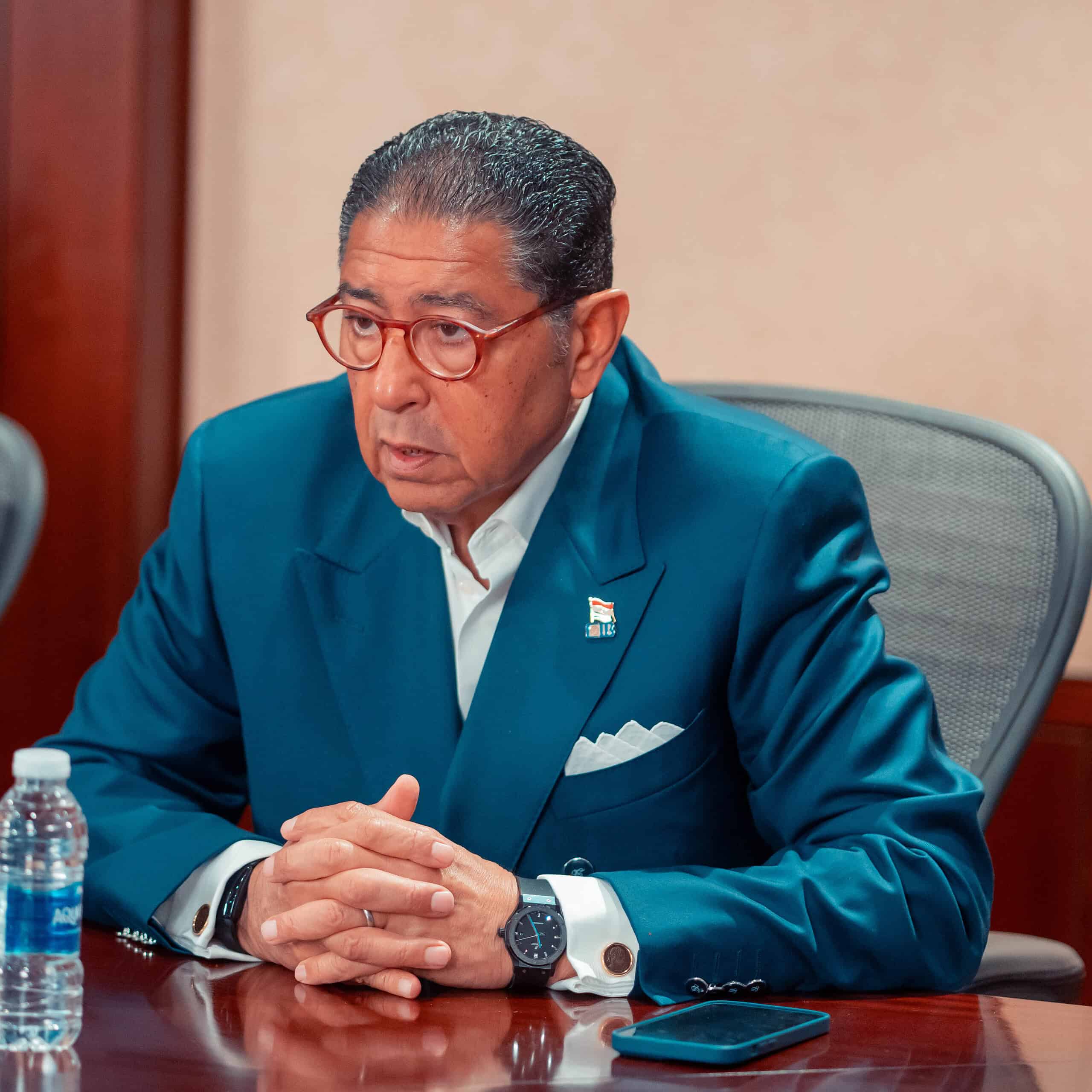
Hisham Ezz Al-Arab | CEO
Hisham Ezz Al-Arab was reappointed CEO of Commercial International Bank (CIB) – Egypt in September 2024. With over 40 years of international banking experience, he has served as CIB’s chairman (2023-2024), and as Chairman and MD (2002–2020). He also founded and chairs the CIB Foundation, which provides healthcare access for over 7 million underprivileged Egyptian children.
Global Finance: What major milestones has the bank achieved over the past 50 years, and what are some of the lessons learned?
Hisham Ezz Al-Arab: Well, you have to give credit to National Bank of Egypt (NBE) and Chase Manhattan for setting up CIB back in the 1970s, because it changed how commercial banking is being conducted. CIB at the time it was Chase National Bank—was the leader in credit lending. They changed the concept of asset lending into cash flow lending, and that was new. People used to lend against collateral and not against expected cash flow; that was a major change in the way of thinking. This was the tip of the iceberg that led the change. Below that there’s a very solid culture, to accept change, to innovate, to have something new all the time, and that carried on over the years. When I joined the bank in 1999, it was one of the large private sector banks. The management at the time and the board decided that we needed to make what you call a “major change.” We needed to be market leaders, and this was the time the bank made a lot of changes. From 1999 until about 2004, CIB was a market leader, applying all international standards and doing things really not required by domestic regulation but applied internationally.
CIB was the market leader in implementing the Basel III requirements in 2012 for asset liability management, not only for the credit flow and cash flow lending. We started to move to other areas of the commercial economy. Establishing for instance the World Risk Committee, Governance Committee, Immigration Committee, Illumination Committee—all of those things were not required by the Egyptian Law.
In 2005, NBE exited from CIB. We were very meticulous, as a board to make sure that the buyer would add value. And this is where the other journey started, in 2006. A consortium led by Ripplewood in the US became the key shareholders, with three representatives on the board. And this is another era when the bank started to change. We had solid board members who added a lot of value, selecting board members meticulously became a part of our culture. When ADQ bought a stake in CIB back in 2022, the quality of the board members was also outstanding. The critical thing is not the money, it’s the contribution of the board members.

Amr El-Ganainy | Deputy CEO
Amr El-Ganainy has served as deputy CEO and an Executive Board member of CIB since October 2023. He joined CIB in 2004 as general manager, Financial Institutions Group, and he successfully led the department through his strong business relationships in the market on the local and regional fronts.
GF: CIB has a growing presence across Africa with operations in Kenya and Ethiopia. Tell us about this experience and where the opportunities for further cross-border expansion are.
Islam Zekry: CIB’s expansion into Africa reflects our long-term vision to position the bank as a leading regional financial institution, exporting banking excellence into high-growth, strategically relevant markets. Our cross-border growth strategy prioritizes: sustainable value creation over pursuit of scale for its own sake, digital enablement to overcome infrastructure limitations and accelerate access, and facilitation of intra-African trade and investment flows, leveraging Egypt’s pivotal regional position.
Our ultimate objective is to build a resilient, scalable, and commercially viable cross-border banking model that reinforces CIB’s footprint across the continent.
So for an Egyptian bank operating from Cairo, there are two value corridors we can chase. One is the more-than-famous remittance corridor and the other is the East African trade corridor. This is basically the natural expansion for our corporate clients based here in Cairo, and this is where most of the trade exposure for the Egyptian customer is coming from.
Second, the go-to-market was completely different, because when you approach a country like Kenya, where it’s very cloudfriendly, very digitally savvy, very advanced from a payments perspective, we thought what kind of value we could bring to the market? So we brought cash flow lending and enhanced the quality of the payment processes with our global partners. By the end of the year, we will also introduce private and wealth management services.
We are ready to reposition Nairobi as our East Africa headquarters because of huge operational synergies. It’s not about expanding the footprint or putting another flag on the CIB global map; it is about amplifying Cairo and Nairobi’s synergies. We also set an exploration phase in Ethiopia and some other targets on the east coast of Africa, but what matters for us is the value creation.

Islam Zekry | Group Chief Finance and Operations Officer
Islam Zekry is the group chief finance and operations officer at CIB, serving as an Executive Board director and a member of CIB’s Executive Committee and CIB Kenya’s board. He joined CIB in 2004 and became its first chief data officer in 2016, leading data analytics and quant finance platforms.
GF: And where is the room for growth in Africa or elsewhere?
Zekry: We see strong growth potential across East Africa and tradelinked corridors in Northeast Africa. Beyond the continent, the Gulf markets and selected European hubs with strong diaspora links offer promising opportunities in remittances and digital cross-border services.
What differentiates CIB is our ability to combine deep banking expertise with local market insights, digitally enabled platforms tailored for premier banking services and underserved segments, and a client-centric model integrating transaction banking, advisory, and customer advanced and tailored solutions.
As an example, in Kenya, we’re enhancing SME lending through digital partnerships, leveraging the country’s well-developed ecosystem. We’re also advancing digital channels to scale access and deepen client engagement.
Al-Arab: Regional expansion is also about Egyptians outside of Egypt. How can we reach them and how can we facilitate their banking transactions? That’s something that is critical for our future banking services.
GF: Sustainable finance has been a true commitment for CIB. Tell us about the bank’s major achievements in this sector and CIB’s commitment to integrating sustainable finance across the board.
Amr El-Ganainy: CIB launched the first corporate green bond in Egypt, with a value of $100 million. This was a landmark transaction in Egypt and was important in supporting Egypt’s transition to a greener economy. Our aim is to play a pivotal role for all companies, and we are committed to helping the private sector transition to a more carbon-neutral future.
Zekry: At CIB, sustainable finance is not treated as a side initiative, it’s at the core of how we operate and grow.
When we partnered with the IFC to issue Egypt’s first green bond, that was virtually unheard of at the time. Today, that kind of financing is embedded in our business model. In fact, when we launched our five-year strategy just last week, ESG wasn’t a separate chapter, it was present throughout.
As we expand across Africa, a significant share of our growth will come from transitional finance, particularly in agricultural and underserved communities. We’re introducing specialized services in these areas: not just as a development goal, but because they make strong business sense.
Even internally, we’ve evolved how we assess performance. For example, our Green Asset Ratio is now a core part of our capital adequacy review, with a clear target to grow it by additional 1% to 2% annually. That’s how seriously we take it.
And to be clear, this is not just a corporate responsibility exercise. It’s part of our value creation strategy. In fact, transitional finance has been shown to deliver enhanced returns, often generating 50 to 100 basis points above conventional lending. So it’s both impactful and commercially sound.

Omar El-Husseiny | Chief Global Markets Executive
Omar El-Husseiny is the Chief Global Markets at CIB and a member of the Bank’s Executive Committee. As Chief Global Markets, he is responsible for key strategic areas including Financial Institutions, Debt Capital Markets, Treasury, Enterprise Governmental Relations, and Global Transaction Banking, ensuring alignment with the Bank’s broader growth agenda.
Mr. El-Husseiny spent his career at CIB, having joined after completing his Bachelor of Business Administration at the Faculty of Commerce at Cairo University in 2001. He holds an MBA in Banking and Finance from the Maastricht School of Management (MsM) and a Graduate School of Banking Diploma from the University of Wisconsin, Madison. In 2019, he completed the Corporate Finance & Credit Program at J.P. Morgan.
GF: Another item on top of the agenda, naturally, is digital banking and transformation. Walk us through CIB’s digital journey.
Rashwan Hammady: Our penetration of digital products across the base, whether in the consumer part, commercial banking, or SMEs or corporate banking, continues to grow over the past couple years. We’ve reached a stage where digital isn’t just about technology, it’s about understanding human needs and behavior. Our core focus now is reshaping our internal culture to understand and serve the next-generation consumer, those who are digitally native, community-led, and brand-critical. Gen Z and digital entrepreneurs will shape the next 20 years of financial services. Our job is to anticipate, not react to, how they live, earn, and make decisions. We’re embedding design thinking, real-time analytics, and personalization into our operating model. It’s less about digital “products” and more about building bespoke and lifestyle-driven experiences.
Omar El-Husseiny: Combining digital transformation and international expansion is no longer a luxury; as a financial service provider, it’s a must. This is where we see the bank moving forward. This is the only way we can expand locally and internationally, therefore, maximizing shareholder value. One takeaway from the past 50 years is how the bank continuously adapts to evolving trends and developments.
GF: How do you use digital tools to target regional expansion?
Al-Arab: For now, there are certain regulatory requirements that we are working on with the regulator, and when that is completed, it will allow us to provide services for individuals overseas. We want to do it seamlessly: simple, easy. The idea is that you are sitting on your sofa somewhere and you want to send money to your family. You don’t need to go to the bank. You want to pay your bills? You don’t need to travel. You don’t even need to make a phone call. It’s a new lifestyle. If you don’t keep developing, you will be left behind.
One thing I want to stress is that CIB is an Egyptian company. Apple is an American company. Where do you manufacture your product? That’s irrelevant. The idea that because we are an Egyptian company, we have to be local and not use the world to grow our market, is wrong. We have to use the world.
Hammady: We were one of the first players in the mobile wallet space. We’ve acquired more than 1.5 million customers via CIB’s mobile wallet. Our strategy now is more geared towards partnerships; we don’t need to build everything. So that maybe we’ll be the manufacturer of products and digital assets and a partner will be responsible for distribution, service, and access. True financial inclusion isn’t about opening accounts, it’s about changing behavior. We’ve realized that literacy and trust gaps in Egypt require a hybrid approach, yes, but more importantly, we need localized design experience. That’s why we’ve built a partnership model where we develop financial products while distribution and education are handled by partners with community reach.
This is how we unlock scale: regulatory-grade infrastructure with grassroots access. The WE partnership will bring banking to millions of new users. They have more than a thousand branches, and this partnership helps us promote financial inclusion across the country. We are expecting to launch that within the coming six to nine months, and that will cater to millions of customers, especially in non-urban communities, small cities, and villages across the country.
El-Husseiny: Egypt’s economy continues to rely heavily on cash transactions. This reliance places additional pressure on the money supply and constrains tax revenue collection, exacerbating inflation and expanding the budget deficit. Therefore, encouraging financial inclusion and digital transformation benefits CIB and the banking sector and is critical for border economic prosperity.
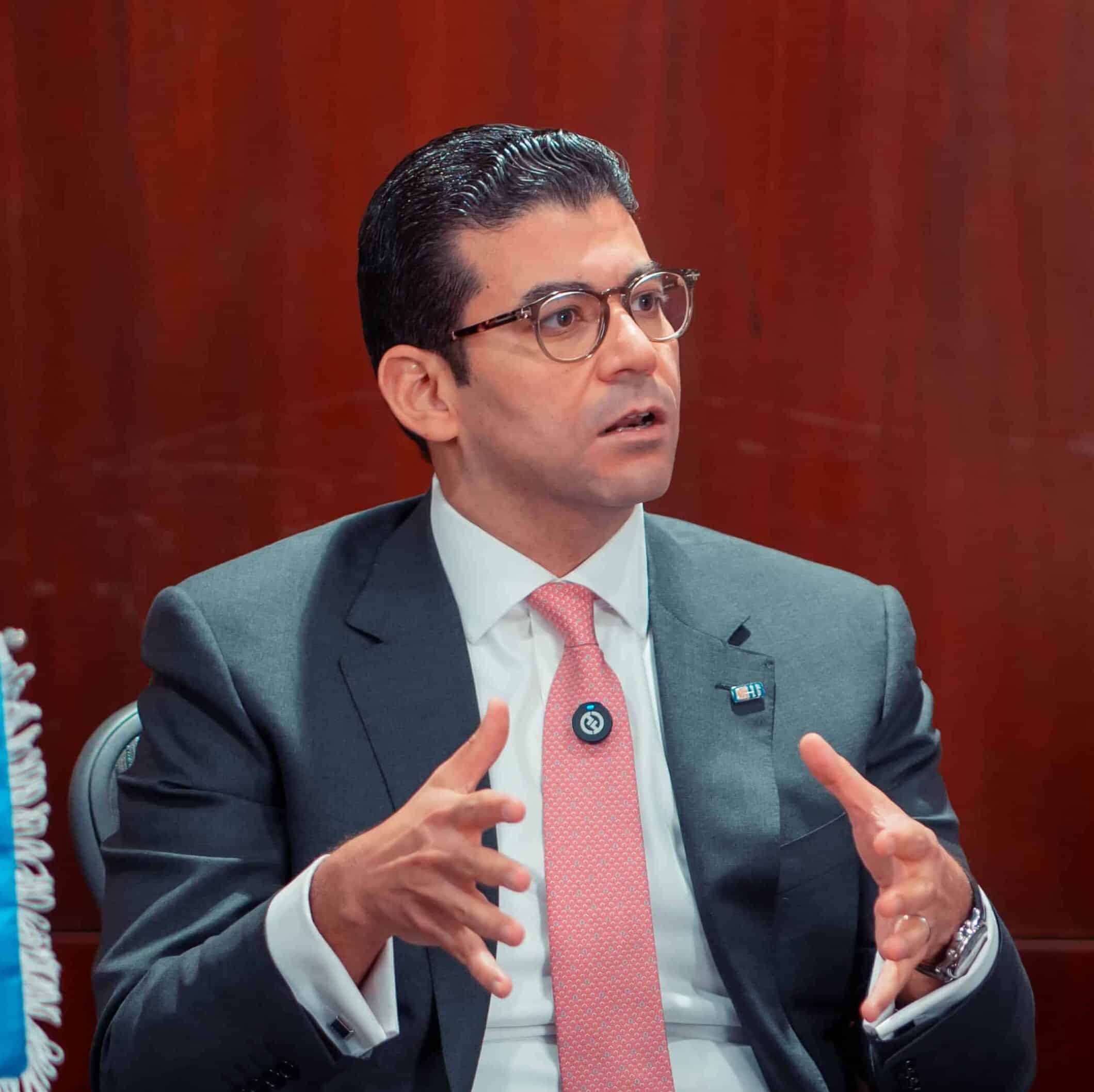
Rashwan Hammady | Chief Retail, Commercial Banking and Financial Inclusion Executive
Rashwan Hammady is chief retail, commercial banking and financial inclusion executive at CIB. With over two decades of experience at the bank, he has spearheaded the launch of several landmark and innovative products and segment propositions, enhancing CIB’s ability to serve its growing customer base of over 3 million clients.
GF: You were mentioning partnerships. Are we talking partnerships with fintechs? With other players? How do you choose your partners?
Hammady: Our philosophy is simple: We build bespoke, compliant, scalable financial infrastructure and services; our partners provide complementary customer reach and engagement. Whether it’s telcoms, e-commerce platforms, or government entities, we choose collaborators who already command trust and attention across Egypt. This allows us to plug into ecosystems where our products become invisible, but indispensable. We’re now scaling this partner-led model not only in Egypt but also as part of our pan-African expansion.
Zekry: Our partnership model is quite unique in that it brings together three core pillars: data, digital, and design.
We’re data-driven, always seeking deeper insights into customer behavior and proactively working to enhance demand capacity. We’re digital by design, using technology to extend our reach and optimize cost-to-serve, especially in high-potential but underserved markets. And we focus strongly on experience design, because we believe that how customers engage with banking still matters, perhaps now more than ever.
When it comes to choosing partners—whether fintechs, infrastructure providers, or even talent networks—we look for alignment on those three dimensions.
We’re also deeply committed to building from the region, for the region. The team here is working tirelessly to reverse the brain drain—attracting top talent from Egypt and across Africa—to help build the banking operating system of tomorrow. We see partnerships as tactical and strategic enablers of long-term innovation.
GF: How is AI opening new doors?
Zekry: While AI has been around conceptually since the 1960s, what’s fundamentally different today is that we’re finally placing these technologies in a meaningful economic and operational context. We’re using AI and data analytics not just to automate, but to understand customer behavior, personalize services, and improve decision-making at scale.
At CIB, we’re investing heavily in building a group-wide data infrastructure: not only in Egypt, but across our African footprint. One clear opportunity lies in streamlining KYC and compliance processes. By creating an integrated data warehouse and sharing verified customer intelligence across our markets, we expect to reduce the cost to serve by 20%-30%. To put that in perspective, I recently came across a study citing EGP2 billion in redundancy costs from duplicative KYC efforts in London’s financial sector. Now imagine the potential savings if we could address that at a pan-African scale. The impact is enormous.
GF: What is the future of CIB?
El-Ganainy: Being Egypt’s largest publicly listed firm and the country’s leading private bank we set our strategy not only to respond to the opportunities emerging today, but to actively shape the Egypt of tomorrow.
We are the leaders in Egypt, and the future is expanding our leadership and investments across Africa and the Middle East.
Zekry: I see CIB evolving into a true business platform: not just in the digital sense, but as a regional and global enabler of investment, innovation, and growth.
We aspire to be a platform that attracts capital, connects businesses, and delivers a new standard of banking experiences—all while being proudly rooted in Egypt. Whether it’s manufacturers expanding from Egypt to the world or clients across Africa and beyond accessing seamless financial services, CIB will be there: facilitating, enabling, and leading.
The future of CIB is not only about being a great bank, but about becoming a trusted gateway to opportunity: for customers, investors, and the economies we serve.
El-Husseiny: I joined the bank 23 years ago, at a time when most of our work was conducted on paper. I’ve taken part in a remarkable transformation, from manual processes to desktop computers, and eventually to digital-first services. CIB will continue to be Egypt’s leading private-sector bank, and our ambition goes beyond national borders. What sets us apart is our ability to adapt to customers’ evolving needs. It’s not just about providing exceptional banking services; it’s about being a trusted financial advisor.
Integrating AI and technologies into our operations is essential. What endures is the customer experience. People will continue to need physical bank branches. CIB has significant room to grow in Egypt. During our strategy process, we asked our staff where they envision the bank in the next 5,10,20, or even 50 years.
The vast majority of our team shared a common vision: we have spent the past 50 years building a strong and successful institution in Egypt, and for the next 50 years, it’s time to expand beyond our borders. As we have developed a proven model, it is time to take that knowledge and expertise abroad, creating shared value through knowledge exchange. Expanding internationally aligns with diversity- a core element of our culture.
We’ve been very successful over the past 50 years in cultivating diversity in Egypt. It’s time to take that success global, where we believe we have the experience and strength to compete.
Hammady: Innovation, for us, is the art of institutional selfdisruption. Over the last decade, CIB has reinvented its business model multiple times: from a corporate-first bank to an inclusive, data-led, multi-segment powerhouse. We are now moving toward a model where the bank is a modular service provider, able to plug into ecosystems across borders. My belief is that our next evolution will see us not only as a bank but as a financial operating system for the region.
Al-Arab: The thing I tell the team and my colleagues is: We are as good as our dreams. You dream small, you remain small. You dream big, you will get there. Be ambitious.
The post CIB Reflects On 50 Years Of Transformative Growth appeared first on Global Finance Magazine.
Governor Hassan Abdalla: At A Turning Point, Stability Restored 14 Oct 8:49 AM (8 days ago)
Global Finance: What have been the key economic challenges over the past two years? Hassan Abdalla: On the international front, we had to navigate an unprecedented surge in global commodity prices, which put pressure on domestic prices and strained fiscal positions. At the same time, major central banks raised interest rates by more than 500 basis points leading to capital outflows from emerging markets. On top of that came the heightened geopolitical tensions. The Red Sea attacks significantly reduced our Suez Canal revenues, placing additional pressure on our foreign currency (FX) sources. Domestically, inflation surged to multi-decade highs, peaking above 35% in 2023 driven by currency depreciation and imported commodity inflation. The currency itself also came under pressure. Successive devaluations between 2022 and 2024 created FX volatility, constrained imports, and caused bottlenecks for industry. Uncertainty over policies and delayed structural reforms further weighed on confidence. The Central Bank had to act. To rein in inflation, we pursued strong monetary tightening, raising rates by a cumulative 1,900 basis points between 2022 and 2024. And in March 2024, the unification of the exchange rate brought back much-needed transparency in the FX market, channeling resources back into the official system. GF: The CBE floated the currency in March 2024—has this policy shift delivered the intended results, and what are the next steps? Abdalla: The unification of the exchange rate was a turning point for Egypt’s economy. It was a bold but necessary step. The flexible FX rate acted as a shock absorber, enabling real-time adjustment to external pressures in a volatile environment. The move brought clarity to the FX market, eliminated distortions, cleared import backlogs, and allowed for more efficient allocation of foreign currency, restoring confidence domestically and internationally. The effects were immediate. By mid-2024, we started reaping the fruits of our actions. Inflation fell to 25.7%, and to 12% by August 2025, giving us space to commence on our cycle, slashing rates by a cumulative 525 basis points since April 2025, without compromising financial stability. Banks remained resilient, and international reserves reached record levels, strengthened by new long-term inflows and large-scale investment commitments, improving both quantity and quality of external buffers. These inflows contributed to a narrowing of the current account deficit to $13.2 billion in the first nine months of the fiscal year 2024/2025, down from $17.1 billion the year before. This was mainly driven by the surge in remittances, one of Egypt’s largest sources of FX, increasing by 82% to $26.4 billion during the same period. Foreign participation in local debt markets resumed as inflation eased and real rates turned positive, reinforcing external liquidity and investor trust. Net international reserves reached a record $49.25 billion, covering 6.5 months of imports. Looking ahead, the focus is on maintaining exchange rate flexibility and developing deeper, more liquid FX markets to strengthen economic resilience. And with inflation easing, expectations being anchored and confidence being restored, we could continue loosening our monetary policy using our data-driven approach. GF: How are the Egyptian banks performing, and what is your outlook? Abdalla: Egypt’s banking sector is robust and resilient. As of June 2025, the Capital Adequacy Ratio is 18.6%, with CET1 at 13.2%, and leverage ratio at 7.6%, well above regulatory minimums. Non-performing loans stood at 2.1%, with 90% provisioning, reflecting a conservative and proactive risk management. Profitability is also strong with ROE at 39% and ROA 2.6%. Liquidity metrics, including Net Stable Funding and Liquidity Coverage Ratios, comfortably exceed regulatory thresholds, demonstrating the sector’s ability to absorb shocks. Looking ahead, the outlook is positive. Financial inclusion hit 75% in 2024, driven by national strategies targeting women, youth, entrepreneurs, and underserved groups. Digital transformation—from mobile banking and digital wallets to digital banks—is expanding access, improving efficiency, and reducing transaction costs. GF: How can the CBE support efforts to make Egypt more attractive to investors? Abdalla: At the most basic level, we aim to ensure economic stability—containing inflation and providing a credible foreign exchange market that is liquid and transparent. I believe that one of the most valuable things we can offer as a central bank is clarity. Clear communication of policy decisions is key to building investor confidence, especially in a volatile global environment. We also focus on developing deep financial markets, expanding local debt and equity instruments, broadening financial instruments and improving infrastructure. In parallel, we ensure our financial sector remains healthy and that credit flows efficiently to the real economy, particularly towards the private sector. Another key element is the resilience of our external position. Egypt has recently secured significant long-term inflows through strategic partnerships and large-scale investment commitments. With new projects in the pipeline, this trend is expected to continue. Broader government initiatives, such as the privatization and sale-of-state-assets program, play a complementary role from a monetary perspective and present investment opportunities. Looking ahead, we are also increasingly aligning our mandate with strategic themes ranging from ESG-linked finance, green transition and digital finance ecosystems. GF: What is your vision for financial innovation? Abdalla: We already took several concrete steps to promote new technologies. In payments, the launch of Egypt’s Instant Payment Network (IPN) through InstaPay was a major breakthrough, currently serving over 12.7 million citizens. We are also modernizing cross-border transfer to make remittances faster and cheaper. In addition, the CBE issued licensing regulations for Digital Banks in July 2023, and provided a license to the country’s first digital bank in 2025. Digital lending via behavioral scoring and alternative data through the Egyptian Credit Bureau (I-Score) is improving access for underserved segments, while eKYC solutions with biometric authentication enable secure digital banking for all citizens. Looking ahead, we are developing a dedicated AI strategy for the banking sector. FinTech growth is supported further by initiatives like the $150 million Nclude Fund—the largest fintech fund in the MENA region—and FinYology, which engages over 30 universities in FinTech projects. At CBE, we are upgrading core banking and treasury systems, developing a unified data platform for faster and more accurate supervision, and building an AI-ready Tier 4 data center. These initiatives will fundamentally change the way we operate, constituting a major step forward in our digital transformation journey.
The post Governor Hassan Abdalla: At A Turning Point, Stability Restored appeared first on Global Finance Magazine.
Governor Aleš Michl: Benefiting From A New Philosophy 14 Oct 8:41 AM (8 days ago)
Global Finance: You’re halfway through your six-year tenure as governor of the Czech National Bank (CNB), and inflation has plummeted from 17.5% to about 2.5% today. How did you achieve this? Aleš Michl: We changed not only the strategy, but also the philosophy. The previous board had kept rates at zero for too long, doubled the money supply by weakening the koruna, and then suddenly hiked rates when inflation had already arrived. Instead of sharp, volatile moves, we kept interest rates high for longer. We added a strong koruna policy, which made imports of energy and raw materials cheaper. This combination delivered the tightest monetary conditions in 25 years. It reduced money creation and slowed demand, and finally inflation came down. Sometimes less is more—stability, patience, credibility. The new philosophy is never again to create long-term inflation by setting zero rates or printing money—this has always backfired in history. GF: Your strategy of not hiking interest rates dramatically to curb inflation differs from how countries like Turkey have battled inflation. Is this because Czechia’s economy is different, or were there also underlying philosophical reasons? Michl: Monetary policy should be consistent and credible, not experimental. An experiment is to have zero rates for more than 10 years—rates that are even negative in real terms—to create inflation, and then when inflation comes, to think it can be quickly beaten with sudden hikes. This was a mistake of the past and we need to admit it. I prefer to keep rates higher for longer and to communicate clearly. The goal is low inflation. GF: The world economy has changed dramatically in recent years. What changes have affected the Czech Republic the most? Michl: The world keeps changing, but humanity keeps repeating the same mistakes. We should remember that too much debt and too much cheap money lead to higher inflation. We can never predict what exactly will change the world. But it is easier to see that nations, households, entrepreneurs and companies that maintain savings, wealth and buffers in good times, and not piles of debt, are better able to absorb shocks when disaster strikes. GF: CNB’s forex reserves are currently around 135 billion euros. During your tenure, its holdings of gold have increased from roughly eight tons to 65, with plans to up this to 100 by 2028. You’ve doubled equity holdings to around 25%. What is the rationale behind this diversification? Michl: In the past, we had a large cumulative loss caused by wrong asset-liability management. Our assets—our forex reserves—had low expected returns compared to the cost of our liabilities. We have changed this significantly. We have raised the long-term expected return on our assets, especially the reserves. We hold more equities and gold. At the same time, we have lowered our liability costs—we have increased the minimum reserves that banks are required to hold, and we have stopped paying interest on them. We have removed the cause. The last two years have been profitable. But we cannot expect profits every year. There will be years when the CNB is in loss—maybe 2025 or some other year. The key is that our assets are now structured to deliver a higher long-term expected return than the expected cost of our liabilities. GF: Do you anticipate joining the eurozone at any point? Michl: Not in the near future. The koruna is our anchor. It helped us fight inflation by keeping imports cheaper. There are far more important questions than the euro. The Czech National Bank will soon be an institution that uses artificial intelligence to supervise the financial market better. We also study blockchain technologies, as they are becoming an important part of modern finance and payment systems. It will use real-time data and machine learning to predict crises. In its supervisory process, the CNB will systematically use AI not only for analysis, but also for automatic decision-making in selected areas. The next generation of bankers will think in a completely different way—with real-time data and with algorithms and systems that will be better partners in decision-making than our past models. The vision is a bank that helps people dream of a future without fear of inflation. A bank that ensures financial stability by working with data and technology. And it will also be an institution where employee ethics prevail. The culture inside the institution is crucial for me. All of this is more important than adopting the euro.
The post Governor Aleš Michl: Benefiting From A New Philosophy appeared first on Global Finance Magazine.
